
Dear EHS Members & Friends,
Here is my presidential address for this summer 2020, whose atmosphere is still a little weird… Currently at the beginning of August, it is possible to think that this terrible health crisis is now behind us, and that our surgical activities will gradually return to their normal course. However, uncertainty remains about a new wave of the Covid-19 pandemic next Fall, with new challenges for our patients and caregivers. Fingers crossed for the imminent arrival of real treatment and effective vaccination.
For our EHS, it is also a curious year, with the freezing of our annual congress, and of most of the congresses of which our society is a partner… Let us hope that the excellent proposal of the EFORT of a “virtual congress ” for the 2020 edition will be crowned with success and will pave the way for new modes of scientific meetings and exchanges within our orthopedic community. The EHS is fully committed to this partnership with the EFORT and each of its members will surely be willing to participate in the best possible way in this major achievement at European level…
Some major regulatory changes, including the famous MDR, have been postponed for a year due to the health crisis, but this regulation will greatly disrupt the European landscape of clinical monitoring of our patients… In this regard, and in partnership with EFORT, a forum dedicated to these new regulations for registers and MDR procedures is organized during the annual face-to-face congress of the Société Française d’Orthopédie (SOFCOT), on 11th November 2020 in Paris, under the authority of Philippe Tracol, president of SOFCOT , and Philippe Neyret, former president of EFORT. See you in Paris in November!
By the way, do you know about “personalized joint replacement”?… If you have free time at the beach this summer, or during a few free hours, we can only recommend that you read this book recently edited by Charles Rivière and Pascal-André Vendittoli, providing for the end of “One Size Fits All”… According to the authors, this is a “more personalized philosophy of arthroplasty” to underline the paradigm shift from systematic surgery to personalized surgery, and finally to reach the holy grail, namely a forgotten joint for all our patients!.. A very large group of eminent experts contributed to the writing of this very interesting book available in open access HERE, and we are happy to support this work of one of the representatives of Canada, our nation invited to the next EHS congress in Lille in September 2021!
So have a great summer everyone and best regards from the whole EHS Board,
Jean-Alain Epinette, MD
EHS President
Letter from the Secretary General, Professor Eleftherios Tsiridis
 Dear Members,
Dear Members,
We are delighted to welcome a new International Member from Santiago in Chile this month, Prof Dante Parodi, as well as two new Full Members: Dr Viktor Janz from Greifswald, Germany and Mr Anil Gambhir from Preston, UK.
Thanks to our Member in New York, Prof Ran Schwarzkopf, who is our international Ambassador of the Month and updates us on the USA experience through the pandemic, over on the August Covid-19 update page HERE. Thanks also to Dr Rihard Trebše, the EHS Nat Rep for Slovenia, who is our local Ambassador of the Month, and summarises his career path and interest in bone infection, below.
Congresses start again from October – see our EHS Hip Calendar. The Hellenic Association of Orthopaedic Surgery & Traumatology is 14-17th October 2020 in Athens, Greece, including a Round Table on: “State of the Art Advances in Hip Surgery – the EHS Perspective”. EFORT’s 1st Virtual Congress, from 28th -30th October 2020, is on “Harmonisation & Diversity”. Register HERE. The DKOU (German Congress of Orthopaedics & Traumatology) is 20-23rd October 2020 on “Diversity United” in Berlin, Germany. November 19-20th is the Course on Osteoarticular Reconstructive Surgery in Madrid, Spain (with EHS Patronage) and on 4-5th December the annual International Conference on Hip and Knee Arthroplasty (an EHS Co-organised Course) in Kharkiv, Ukraine. Following this is the MAST 7 Masterclass in Arthroplasty Surgery, a Hybrid Conference from 11-13th December 2020 in Thessaloniki, Greece (an EHS Co-organised Course). Finally, you can register now for the 3rd European Annual Direct Anterior Approach THA Course in Innsbruck Austria (an ICJR and EHS Co-organised Course) taking place 28-30th January 2021.
But for now, enjoy your summer holidays with your families.
Best wishes,
EHS Secretary General, Professor Eleftherios Tsiridis
EHS Ambassador of the Month, Rihard Trebše
 Dear Friends,
Dear Friends,
After achieving my medical degree at the Medical Faculty in Ljubljana, Slovenia in 1993, I was considering starting my professional career as a resident in paediatrics. While waiting for the residency, which was difficult to obtain at that time, I was circulating in the medical facilities close to my hometown Izola at the north Adriatic coast. Therefore, it happened that I came to Valdoltra Orthopaedic Hospital where I am still full time employed. The hospital impressed me immediately. It was the only hospital of this type in the country being focused only on elective orthopedics and it was very different from the socialistic institutions that I visited before. The difference was an extreme focus on hygiene, order, and efficiency. I vividly remember a discussions among residents about an arthroplasty dispute when the head OR nurse arrived and saying: “You are always discussing orthopedics, but you should focus more on the most important things in the hospital, which are hygiene and order. Far after those two issues comes the medicine and your specialty stuff.” After she also reminded us that our hair is protruding out of the headcover, the shirt is not well tucked in the trousers and the trousers are not in the socks.
I soon become absorbed in orthopedics, particularly joint replacements, that had a long tradition in the hospital starting in the Fifties with the Judet implants. We had a high hip revision burden in that period because of an unlucky selection of a cementless isoelastic polyacetal stem with a stainless steel core used heavily in the Eighties, that had among the highest revision rates of all artificial hips. Those failures were very distressing for the practicing orthopaedic surgeons, including me a resident being 90% of the time in the OR assisting and learning the first surgical skills. The failures prompted my curiosity to learn everything about material-related artificial joint failures. I was then very surprised that in mid-Nineties material related issues were not yet solved. Since I was interested also in other failure mechanisms I decided to focus my surgical training mostly into revisions.
The hospital had a severe weakness at that time. It was the septic ward where all the patients with septic conditions, mostly PJI, were translocated to avoid a presumed “cross-contamination” with the “clean” patients. Despite having a department head, the surgeons were mostly treating their own cases, with a two-stage exchange where the second stage hardly ever arrived. There was no systematic approach. The only consistency was the two-stage approach with weeks of suction installation drainage after implant removal. Seeing the misery of the patients I started to become interested in septic failures, too. It was a major breakthrough when Zimmerly paper was published in JAMA in 1998 introducing rifampicin for acute staphylococcal infections. The breakthrough was not that much rifampicin but more the idea that acute PJI could be treated by implant retention. Although it was a bit difficult to convince the colleagues into changing the practice, within one year outcomes improved. To get the idea about how others treat arthroplasty failures I visited many places around the world including two fellowships at Mayo in US and Bruderholz in Switzerland. It surprised me a lot how diverse are the approaches To PJI diagnostics and treatment around the world.
Hip surgery has changed a lot since then worldwide. We tried to match the development in our institution. We started a hospital-based registry in 2002 that developed into the Slovenian Arthroplasty Registry in 2020. A huge explant and tissue retrieval program serve as a basis for failure mechanism analyses. A scientific department focused on solving orthopedic challenges is growing. Surgeons of action increased their surgical expertise by focusing on narrower fields of action. Detecting, registering, and algorithmic managing of complications and failures are starting to pay off.
EHS is an excellent and well-managed organization for all interested in hip surgery. The liberal and relaxed atmosphere is a perfect environment for discussing ideas for the advancement of hip disorders treatment which can be published in the important and growing “Hip International” – the Society’s journal. In my opinion, there are three major future challenges for EHS. The most basic but crucial is to increase the reproducibility of surgical performance around Europe by fostering surgical education through fellowships and other hands-on teaching solutions. There is no doubt that information technology is the future of any surgery. Consequently, the development and implementation of elegant IT solutions for bone cuts and preparation and implant positioning is an important goal. Prompt recognition and expert management of complications is, however, the most important challenge because complications are the greatest fear of the patients facing hip surgery.
It is a great privilege for me to be a National Representative of Slovenija and an Ambassador for the European Hip Society. As a president of European Bone and Joint Society (EBJIS) I am looking forward to increasing the future collaboration between EHS and EBJIS within the common field of septic hip arthroplasty failure.
Associate Professor Rihard Trebše, MD, PhD
EHS Nat Rep for Slovenia
Consultant Orthopedic Surgeon
Valdoltra Orthopedic Hospital
Head of Service for Bone Infections
President European Bone and Joint Infection Society



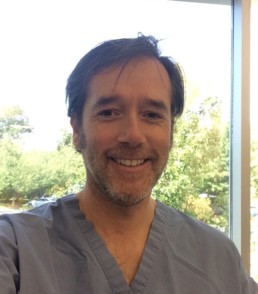
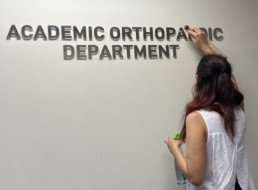

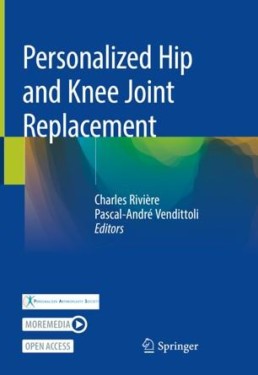
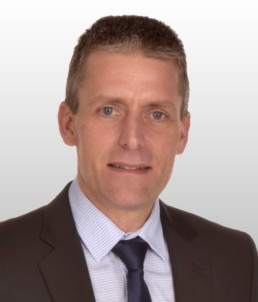

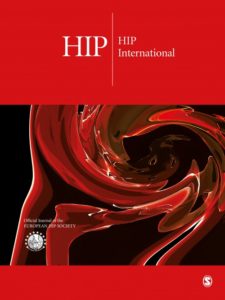 To access your Hip International subscription online, members just log in to the EHS website (not the publisher's website) and click the tab "Media" on the homepage
To access your Hip International subscription online, members just log in to the EHS website (not the publisher's website) and click the tab "Media" on the homepage